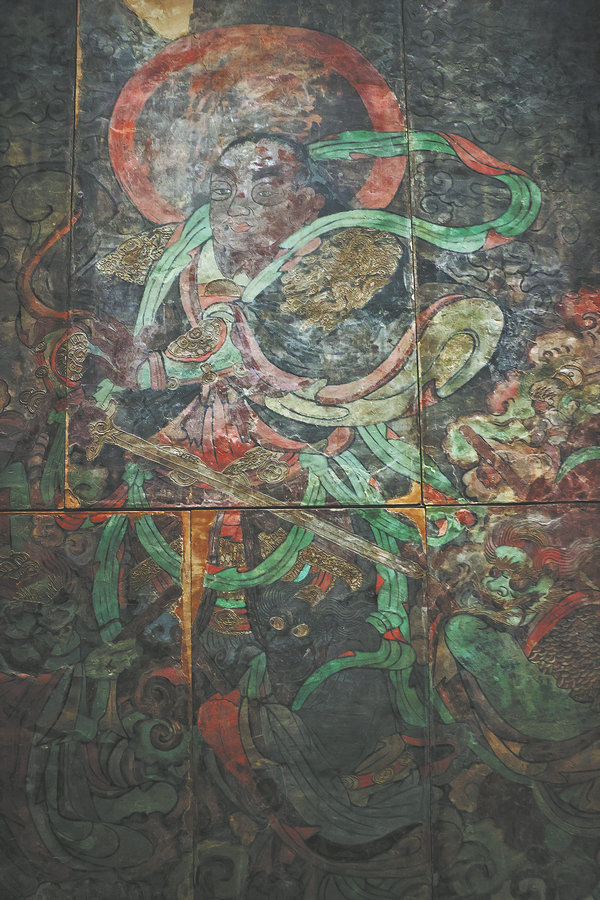

A relocated wonder
Many visitors may wonder why the Yongle Palace relics were moved to museums. The short and simple answer may be protection.
The rediscovery of this architectural trove in the 1950s soon led to a dilemma, as the temple was located within the planned reservoir area of the Sanmenxia Dam on the Yellow River. Experts from across the country gathered to draft relocation plans.
As the curator recalls, different spots were considered, including the provincial capital Taiyuan where conditions were better, but the final decision was to minimize disturbance. One brick after another, the temple and its murals were carefully moved and rebuilt about 20 kilometers from its original position.
Not all of the architectural components and murals were sturdy enough to be put back, and so some original pieces were stored in warehouses and replaced by replicas.
"Yongle Palace was one of the earliest major cultural heritage conservation projects of New China," An says. "Back then, people finished the job in challenging conditions. They didn't have sufficient electricity, and much of the work was done by bare hand."